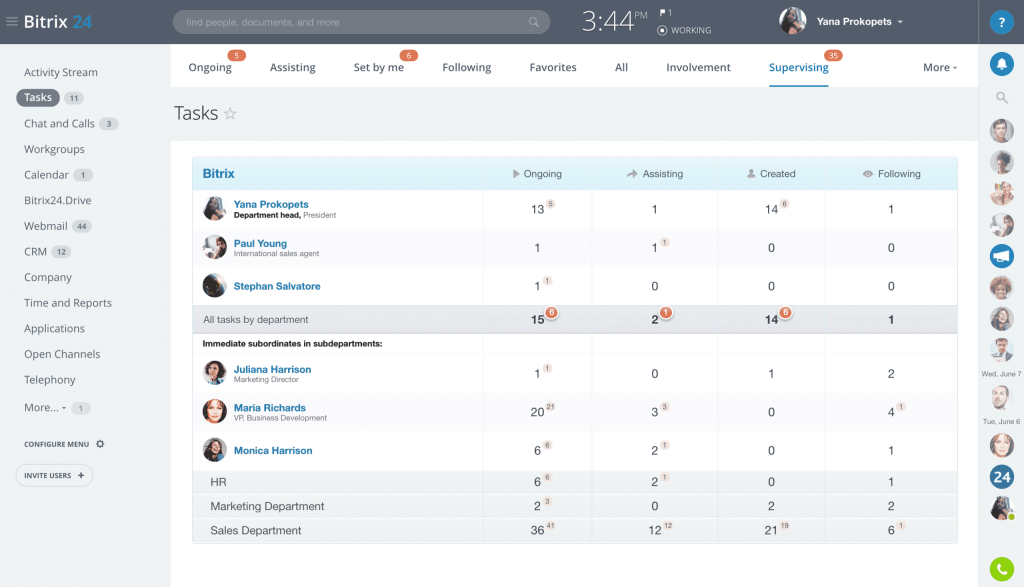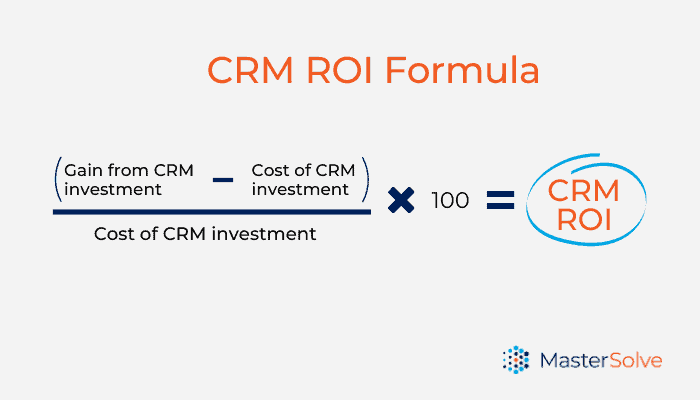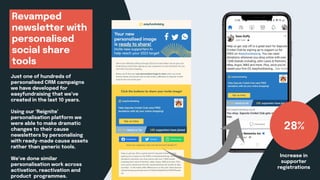Unlocking Growth: Crafting Compelling CRM Marketing Case Studies
In the dynamic world of marketing, understanding and leveraging customer relationships is paramount. Customer Relationship Management (CRM) systems have become indispensable tools for businesses of all sizes. They provide a centralized hub for managing interactions, tracking data, and ultimately, driving sales and fostering customer loyalty. But simply implementing a CRM isn’t enough. To truly demonstrate the value of your CRM investment and inspire others, you need to craft compelling CRM marketing case studies. These case studies serve as powerful narratives, showcasing the tangible benefits of your CRM strategy. In this comprehensive guide, we’ll delve into the art and science of creating effective CRM marketing case studies, offering practical advice, insightful examples, and actionable strategies to help you unlock significant growth.
The Power of CRM Marketing Case Studies
Before we dive into the ‘how’, let’s explore the ‘why’. Why are CRM marketing case studies so crucial? The answer lies in their ability to:
- Build Trust and Credibility: Case studies provide concrete evidence of your CRM’s success. They’re not just marketing fluff; they’re real-world examples of how your CRM has helped other businesses achieve their goals. This builds trust with potential customers and positions you as a reliable provider.
- Demonstrate ROI: Case studies quantify the value of your CRM. By highlighting specific metrics like increased sales, reduced costs, or improved customer satisfaction, you can clearly demonstrate the return on investment (ROI) of your CRM solution.
- Showcase Expertise: Creating a compelling case study showcases your understanding of CRM and your ability to implement it effectively. It positions you as an expert in your field and strengthens your brand’s reputation.
- Inspire and Educate: Case studies are a powerful way to educate potential customers about the benefits of CRM and inspire them to take action. They provide valuable insights and practical tips that can help businesses improve their own CRM strategies.
- Generate Leads: Case studies are highly valuable content assets that can be used to generate leads. They can be gated behind a form, allowing you to collect valuable contact information from interested prospects.
Planning Your CRM Marketing Case Study
Creating a successful CRM marketing case study requires careful planning. Here’s a step-by-step guide to help you get started:
1. Identify the Right Customer
The first and arguably most important step is selecting the right customer. Choose a customer who has achieved significant results with your CRM and is willing to participate in the case study. Consider the following factors:
- Success Metrics: Look for customers who have seen tangible improvements in key performance indicators (KPIs) such as sales, customer retention, lead generation, or customer satisfaction.
- Willingness to Participate: Ensure the customer is enthusiastic about being featured in the case study and is willing to provide the necessary information, quotes, and data.
- Relevance: Choose a customer whose industry, size, and challenges align with your target audience. This will make the case study more relatable and impactful.
- Brand Alignment: Select a customer whose brand values align with your own.
2. Define Your Objectives
Before you start writing, define the goals of your case study. What do you want to achieve? Are you trying to:
- Increase brand awareness?
- Generate leads?
- Demonstrate ROI?
- Showcase a specific feature or functionality of your CRM?
Having clear objectives will guide your writing and ensure that your case study effectively communicates your key messages.
3. Outline the Structure
A well-structured case study is easy to read and understand. Here’s a common structure you can adapt:
- Title: A compelling title that grabs attention and highlights the key results.
- Executive Summary: A brief overview of the case study, including the customer’s challenge, the CRM solution, and the key results.
- The Challenge: Describe the customer’s pain points and the problems they were facing before implementing your CRM.
- The Solution: Explain how your CRM was implemented and how it addressed the customer’s challenges.
- The Results: Present the key results and metrics, quantifying the benefits of your CRM.
- Conclusion: Summarize the key takeaways and highlight the customer’s success.
- Call to Action: Encourage readers to take the next step, such as requesting a demo or contacting your sales team.
Crafting a Compelling CRM Marketing Case Study
With the planning phase complete, it’s time to start writing. Here’s how to craft a compelling case study that resonates with your audience:
1. Write a Captivating Title
Your title is the first thing readers will see, so make it count. It should be attention-grabbing, informative, and optimized for search engines. Consider using:
- Numbers: “How [Customer] Increased Sales by 30% with [CRM Name]”
- Action Verbs: “Transforming [Customer]’s Customer Experience with [CRM Name]”
- Keywords: “[CRM Name] Case Study: Boosting Lead Generation for [Industry]”
2. Create a Concise Executive Summary
The executive summary should provide a snapshot of the entire case study. It should include the customer’s challenge, the solution, and the key results. Keep it brief and to the point, typically around 100-150 words.
3. Tell a Story
People connect with stories. Frame your case study as a narrative, starting with the customer’s challenges and leading to their successes. Use storytelling techniques to engage your readers and make the case study more memorable. Instead of just listing facts and figures, paint a picture of the customer’s journey.
4. Describe the Challenge in Detail
Clearly articulate the customer’s pain points and the problems they were facing before implementing your CRM. This helps readers understand the context and appreciate the value of your solution. Provide specific examples and use quotes from the customer to illustrate their challenges.
5. Explain the Solution Clearly
Explain how your CRM was implemented and how it addressed the customer’s challenges. Describe the specific features and functionalities that were used and how they contributed to the customer’s success. Avoid technical jargon and focus on the benefits of your solution.
6. Highlight the Results with Data and Metrics
This is the most crucial part of your case study. Quantify the benefits of your CRM by presenting specific data and metrics. Use numbers, percentages, and charts to illustrate the improvements the customer achieved. Focus on the metrics that are most relevant to your target audience. For example:
- Increased Sales: “Sales increased by 25% within the first quarter of implementation.”
- Reduced Costs: “Marketing costs decreased by 15% due to automated lead nurturing.”
- Improved Customer Satisfaction: “Customer satisfaction scores increased by 10% after implementing the CRM.”
- Faster Response Times: “First response time to customer inquiries improved by 40%.”
7. Use Quotes from the Customer
Quotes from the customer add credibility and authenticity to your case study. They provide a personal perspective and help readers connect with the customer’s experience. Use quotes throughout the case study to illustrate key points and reinforce your message. Choose quotes that are impactful and memorable.
8. Include Visuals
Visuals can significantly enhance your case study. Use images, charts, graphs, and videos to make your content more engaging and easier to understand. Include:
- Customer Logos: Display the customer’s logo to build brand recognition.
- Screenshots: Show screenshots of the CRM interface to illustrate its features.
- Charts and Graphs: Visualize data and metrics to make them more impactful.
- Videos: Consider including a short video testimonial from the customer.
9. Write a Strong Conclusion
The conclusion should summarize the key takeaways of the case study and highlight the customer’s success. Reiterate the benefits of your CRM and emphasize how it helped the customer achieve their goals. End with a strong call to action.
10. Add a Clear Call to Action
Don’t leave your readers hanging. Tell them what you want them to do next. Encourage them to:
- Request a demo.
- Contact your sales team.
- Download a free trial.
- Visit your website.
- Read other case studies.
Promoting Your CRM Marketing Case Study
Once your case study is complete, it’s time to promote it. Here are some effective strategies:
- Website: Publish your case study on your website and make it easily accessible.
- Blog: Write a blog post summarizing the case study and highlighting the key takeaways.
- Social Media: Share your case study on social media platforms like LinkedIn, Twitter, and Facebook.
- Email Marketing: Send an email to your subscribers, announcing the new case study.
- Paid Advertising: Consider using paid advertising to promote your case study and reach a wider audience.
- Sales Team: Equip your sales team with the case study to use during their sales presentations.
- Partnerships: Share your case study with your partners and encourage them to promote it to their networks.
Examples of Great CRM Marketing Case Studies
Let’s look at some examples of effective CRM marketing case studies to inspire you:
Example 1: Salesforce
Salesforce is a master of case studies. They feature numerous customer success stories on their website. Their case studies are well-structured, visually appealing, and clearly demonstrate the value of their CRM solution. They focus on specific industries and use compelling storytelling to engage their audience. They highlight the challenges faced by each customer, how Salesforce helped them overcome these challenges, and the positive results achieved. They effectively use customer quotes and data visualization to enhance their case studies.
Example 2: HubSpot
HubSpot’s case studies are known for their clarity and focus on inbound marketing principles. They often showcase how their CRM and marketing automation tools have helped customers generate leads, increase conversions, and improve customer relationships. They tell compelling stories about how their customers have improved their business. They typically feature a clear problem, a concise solution, and the quantifiable results achieved. They also include a clear call to action, encouraging readers to take the next step.
Example 3: Zendesk
Zendesk’s case studies are focused on customer service and support. They highlight how their CRM and helpdesk tools have helped customers improve their customer satisfaction scores, reduce support costs, and streamline their customer service operations. Their case studies tend to be concise, easy to read, and use a conversational tone. They use a mix of text, visuals, and customer quotes to tell a compelling story. The case studies clearly outline the challenges the customers faced and the positive outcomes achieved using Zendesk.
Tips for Writing a Successful CRM Marketing Case Study
Here are some additional tips to help you create compelling CRM marketing case studies:
- Focus on the Customer: The case study should be about the customer’s success, not just your CRM.
- Be Specific: Use specific data and metrics to quantify the benefits of your CRM.
- Be Authentic: Use real customer quotes and avoid overly promotional language.
- Keep it Concise: People are busy. Keep your case study focused and to the point.
- Proofread Carefully: Ensure your case study is free of errors and typos.
- Optimize for SEO: Use relevant keywords in your title, headings, and content to improve search engine visibility.
- Make it Mobile-Friendly: Ensure your case study is optimized for viewing on mobile devices.
- Update Regularly: Keep your case studies fresh by updating them with new data and information.
Measuring the Impact of Your CRM Marketing Case Studies
Once you’ve published your case study, it’s important to measure its impact. Track the following metrics:
- Website Traffic: Monitor the traffic to your case study page.
- Lead Generation: Track the number of leads generated from your case study.
- Conversion Rates: Measure the conversion rates of visitors who read your case study.
- Social Media Engagement: Monitor the shares, likes, and comments on your case study on social media.
- Sales Team Feedback: Gather feedback from your sales team on how they are using the case study.
By tracking these metrics, you can assess the effectiveness of your case study and make adjustments as needed.
Conclusion: The Path to CRM Marketing Success
Crafting compelling CRM marketing case studies is a powerful strategy to showcase the value of your CRM solution, build trust with potential customers, and drive business growth. By following the guidelines and tips outlined in this guide, you can create case studies that resonate with your target audience, demonstrate your expertise, and ultimately, help you achieve your marketing goals. Remember to focus on the customer, be specific, and tell a compelling story. With careful planning, execution, and promotion, your CRM marketing case studies can become a cornerstone of your marketing strategy.
Creating successful CRM marketing case studies is an ongoing process. Continuously evaluate your case studies, gather feedback, and make improvements to optimize their effectiveness. By dedicating time and resources to this effort, you can unlock significant growth and establish your brand as a leader in the CRM space. Embrace the power of storytelling, quantify your results, and watch your business flourish.
By investing in high-quality case studies, you can significantly enhance your marketing efforts and drive substantial business results. Start creating your own compelling CRM marketing case studies today and witness the transformative power of customer success stories.





